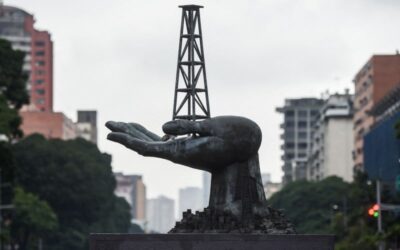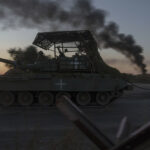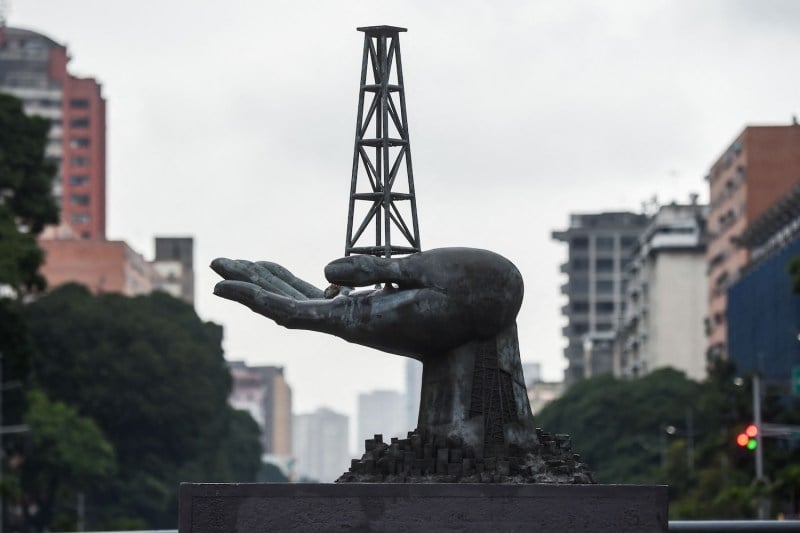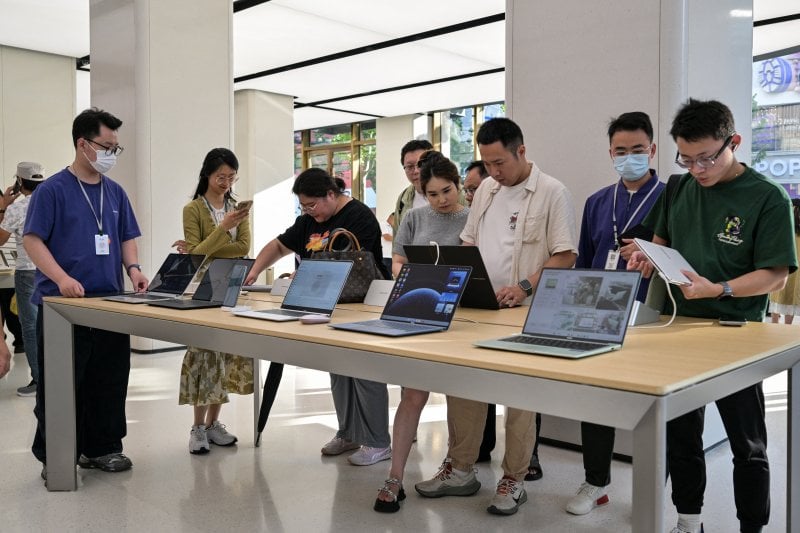Russia, Ukraine Swap Nearly 800 Prisoners in Massive Exchange Deal

Russia, Ukraine Swap Nearly 800 Prisoners in Massive Exchange Deal
But the two sides still appear at odds over what it will take to secure a cease-fire.
Ukrainian prisoners of war are seen after a swap with Russia at an unknown location in Ukraine on May 23. Ukrainian President Volodymyr Zelensky via Telegram via Reuters
Welcome back to World Brief, where we’re looking at one of the largest prisoner exchanges in the Russia-Ukraine war, ongoing nuclear talks between the United States and Iran, and trapped gold miners in South Africa.
World Brief will be off on Monday, May 26, for the U.S. holiday of Memorial Day.
Welcome back to World Brief, where we’re looking at one of the largest prisoner exchanges in the Russia-Ukraine war, ongoing nuclear talks between the United States and Iran, and trapped gold miners in South Africa.
World Brief will be off on Monday, May 26, for the U.S. holiday of Memorial Day.
Bringing People Home
Russia and Ukraine swapped nearly 800 prisoners on Friday in the first part of what is expected to be the war’s largest prisoner exchange deal thus far. Each side released 390 individuals—270 soldiers and 120 civilians—with more due to be freed this weekend.
“What matters most is that Ukraine is bringing its people home,” Ukrainian President Volodymyr Zelensky wrote on X on Friday.
The exchange was agreed to during Russia-Ukraine peace talks in Istanbul last week, the first direct negotiations between the warring sides since the early days of the conflict. Although that meeting’s primary purpose was to hammer out a cease-fire deal, the only concrete outcome to emerge was both countries agreeing to each release 1,000 prisoners in the coming days.
The released Ukrainians were transported to a hospital in the northern Chernihiv region, while the Russian prisoners were moved to Belarus for medical and psychological treatment. Moscow is believed to have captured more than 8,000 Ukrainian soldiers since it launched its full-scale invasion of Ukraine in February 2022. More than 16,000 Ukrainian civilians are also believed by Kyiv to be in Russian captivity, with rights groups accusing Moscow’s authorities of kidnapping Ukrainian civilians in Russian-occupied land and deporting them to Russia, where they are reportedly held without charge or trial.
According to Moscow’s Defense Ministry, the freed Russian civilians were captured inside Russia’s Kursk region during Ukraine’s monthslong counteroffensive. Zelensky, however, said the captured civilians were “Russian saboteurs and collaborators” who were arrested by Ukrainian law enforcement.
Kyiv maintains that it is ready for an immediate 30-day cease-fire. And U.S. President Donald Trump has expressed optimism that Friday’s swap could signal future progress in peace talks, writing, “This could lead to something big???” on his Truth Social account.
But Russia has refused to pause its attacks on Ukraine until the latter meets all of its conditions, which the Kremlin has said are the “root causes” of the war. These include Russian demands that Ukraine cede more of its territory, restrict the size of its military, and be barred from joining NATO. Ukrainian officials have called these conditions “non-starters.”
Russia currently controls roughly one-fifth of Ukraine’s territory, but it seeks full ownership of five major regions, including Crimea, which it first annexed in 2014. On Friday, Moscow claimed to have captured the northeastern settlement of Rakivka in Ukraine’s Kharkiv region, and Kyiv accused Russian forces of killing at least one person and wounding eight others when targeting port infrastructure in its Odesa region.
Today’s Most Read
- Trump Gets the Middle East Right by Steven A. Cook
- Russia Has Started Losing the War in Ukraine by Michael Kimmage
- A Russia-NATO War Would Look Nothing Like Ukraine by Fabian Hoffmann
What We’re Following
Inconclusive nuclear talks. U.S. and Iranian negotiators convened in Rome on Friday for the fifth round of nuclear talks. According to Oman, which is acting as a mediator, limited progress has been made, and both sides will meet again, though the next date and location have not yet been decided.
“These negotiations are too complex to be resolved in just two or three meetings,” Iranian Foreign Minister Abbas Araghchi said. “I am hopeful that in the next one or two rounds—especially given the better understanding of the Islamic Republic’s positions—we can reach solutions that allow the talks to progress.”
Uranium enrichment remains the main sticking point in the negotiations, with the United States insisting that a nuclear deal must prohibit Tehran from enriching any uranium and Iran arguing that it has the right to do so for civilian purposes. Several proposals have reportedly been floated for how to resolve the issue, but none have yet been agreed to.
There is concern over “whether the [Trump] administration is ready to do the very hard work to even get a framework for a deal or whether the administration—as it is doing in the Russia-Ukraine situation—is preparing to back off and let others take whatever action they desire,” former U.S. Deputy Secretary of State Wendy Sherman told FP’s Situation Report.
Gold mining accident. South African authorities on Friday rescued 79 miners trapped in an underground gold mine, but more than 180 individuals remain. The workers became trapped on Thursday, when a shaft at the Kloof gold mine, located west of Johannesburg, was damaged. None of the workers have reportedly been injured or killed.
“We are actively implementing our safety and shaft examination procedures,” the Sibanye-Stillwater mining company said in a statement. “Once these are completed, we will begin hoisting employees to surface. All 260 employees have been accounted for, are safe and have been provided with food.”
The Kloof gold mine is one of Sibanye-Stillwater’s deepest, reaching around 2 miles below the Earth’s surface. Mining accidents are not uncommon in South Africa. In January, at least 78 bodies were pulled from an unauthorized gold mine after local police cut off food and water for months to try to force those who were illegally mining to the surface. The country’s GIWUSA labor union called it the worst state-sanctioned massacre since the end of apartheid in 1994.
Vote on oil. Venezuelans will head to the polls on Sunday to vote in legislative and regional elections—the first since President Nicolás Maduro claimed victory in a disputed presidential contest last July despite credible evidence to the contrary. Opposition leaders are urging people to boycott the vote to signify distrust in the federal system; only 15.9 percent of citizens are expected to turn out, according to a nationwide poll held between April 29 and May 4.
Venezuela faces a slew of economic troubles, civil liberty crackdowns, and rising anti-government protests. Year-over-year inflation reached 172 percent in April, and the monthly minimum wage for state employees has dropped to $1.36. Many opposition leaders have fled the country to evade imprisonment. But one of the biggest sticking points of this election is the Essequibo region, an oil-rich territory that Guyana claims as its own. For the first time, Venezuela will elect representatives for a new Guayana Esequiba state in its growing bid to control the land and its critical resources.
Oil is also top of mind for Suriname, which will hold its general election on Sunday. The Latin American country is on the verge of an oil boom, with income from the country’s first offshore project set to begin production in 2028. Elected parliamentarians and the chosen president will be expected to decide what to do with the influx of funds. But opposition members are warning that the ruling government is preparing to engage in “massive fraud” that could affect the election’s results. Fraud allegations have already marred much of the campaign cycle for the ruling party.
What in the World?
On Monday, Huawei launched its first laptop computers that run a Chinese operating system. What is that system’s name?
A. Divine Dragon
B. HarmonyOS
C. JadeOS
D. The People’s System
Odds and Ends
Norwegian retiree Johan Helberg woke up early Thursday to the sight of a large cargo ship in his backyard. NCL Salten, en route to the Norwegian town of Orkanger, ran aground on Thursday after the officer on watch reportedly fell asleep. “Big ships pass us now and then,” though they mostly keep to the fjord’s deeper waters, Helberg said. “We don’t usually see ships right outside our living room window. So this is especially strange.” No injuries or oil spills were reported, but locals must still contend with how to fix up their yards.
And the Answer Is…
B. HarmonyOS
The Chinese government has a strong interest in a purely domestic operating system due to fears that foreign models could create security vulnerabilities, FP’s James Palmer writes in China Brief.
To take the rest of FP’s weekly international news quiz, click here, or sign up to be alerted when a new one is published.
Alexandra Sharp is the World Brief writer at Foreign Policy. Bluesky: @alexandrassharp.bsky.social X: @AlexandraSSharp
Stories Readers Liked
In Case You Missed It
A selection of paywall-free articles

Four Explanatory Models for Trump’s Chaos
It’s clear that the second Trump administration is aiming for change—not inertia—in U.S. foreign policy.





















Join the Conversation
Commenting is a benefit of a Foreign Policy subscription.
Subscribe
Subscribe
Already a subscriber?
.
View Comments
Join the Conversation
Join the conversation on this and other recent Foreign Policy articles when you subscribe now.
Subscribe
Subscribe
Not your account?
View Comments
Join the Conversation
Please follow our comment guidelines, stay on topic, and be civil, courteous, and respectful of others’ beliefs.
View Comments
Change your username |
Log out
Change your username:
CANCEL
Confirm your username to get started.
The default username below has been generated using the first name and last initial on your FP subscriber account. Usernames may be updated at any time and must not contain inappropriate or offensive language.